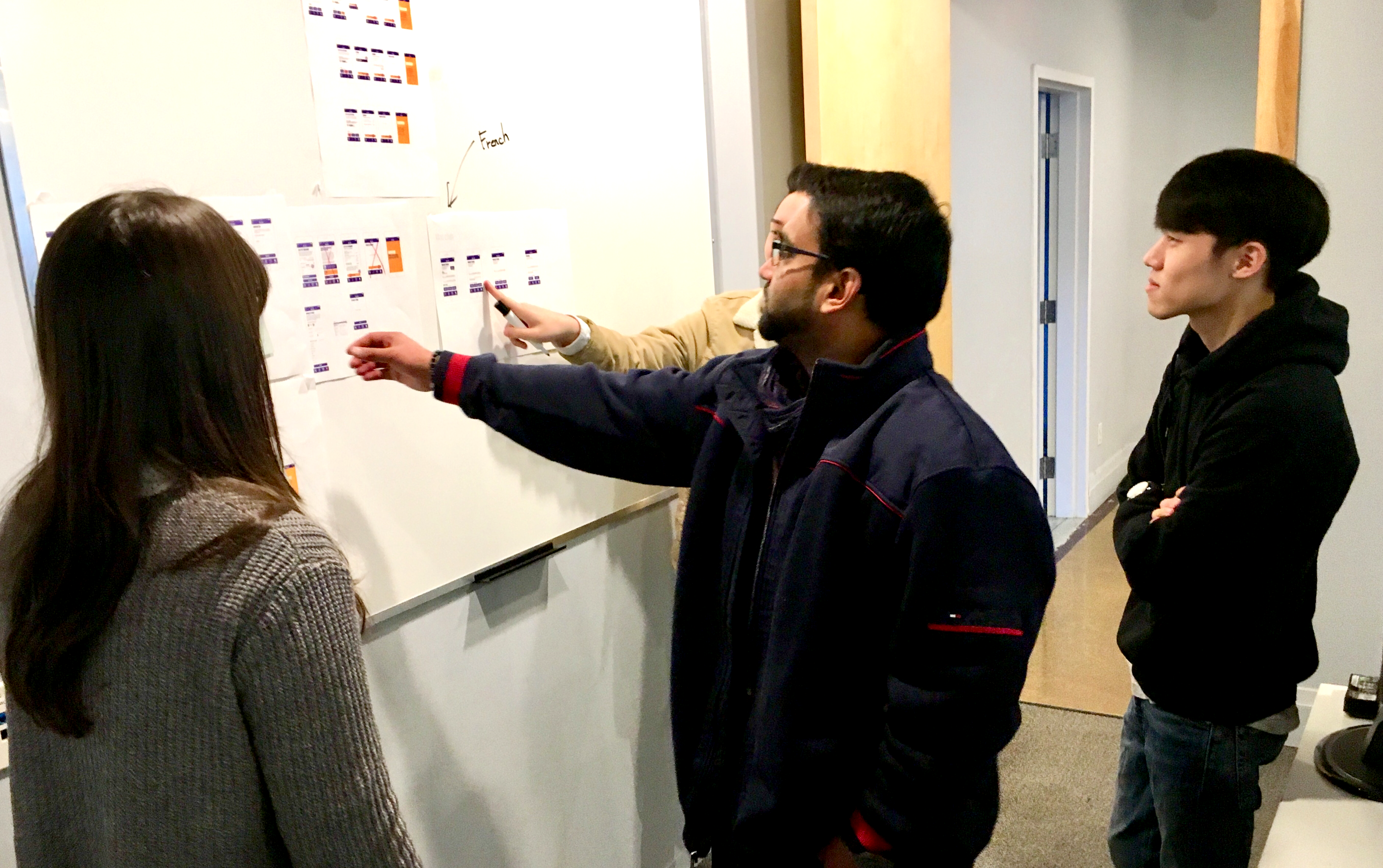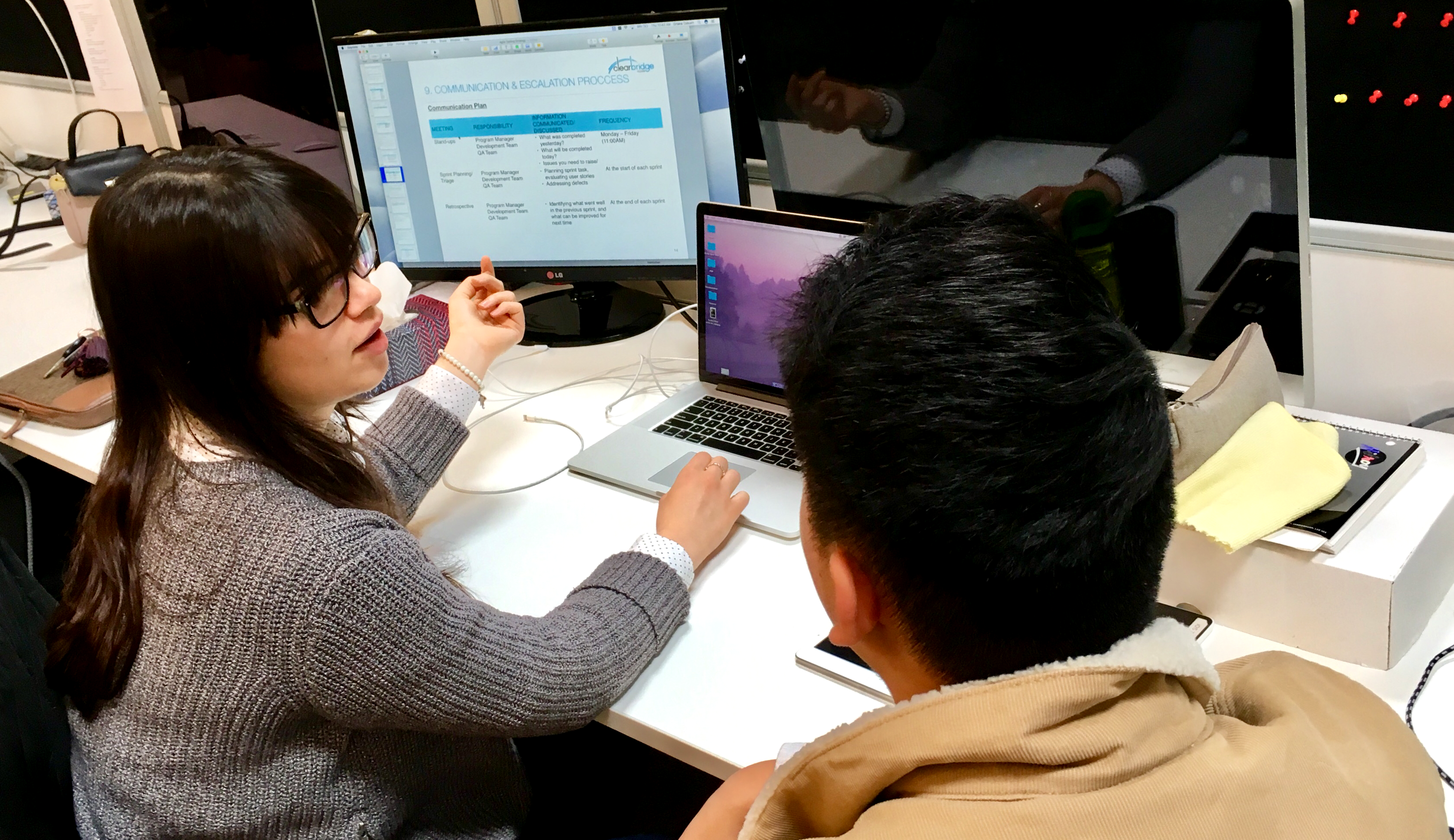In today’s mobile app market, it doesn’t take long for users to pass judgment on the products they download. Users have incredibly high expectations for mobile app quality, functionality, and performance. At Clearbridge Mobile, our Quality Assurance (QA) team is committed to delivering quality, market-ready mobile apps for our clients.
The previous post in this series took you through a typical day for a Project Manager at Clearbridge, and explained the steps involved in planning and delivering mobile app development projects. This blog will explore the role of QA and the part they play in transforming your product vision into a high-performing mobile app.
Who are QA Analysts?
A QA Analyst is responsible for keeping tabs on every stage of the app development process and makes sure the product design and technical elements adhere to specified standards. They help meet release deadlines by segmenting the development project into practical testing goals and communicate any issues back to the team’s Developers and Project Manager.
QA Analysts are creative, out-of-the-box thinkers. They’re able to look beyond what is assumed of the software and find areas where users might experience complications. It’s one thing to understand how the software is intended to work, but it’s equally important to be able to identify what’s gone wrong when it doesn’t work. At Clearbridge, our QA analysts are insightful, resourceful, and persistent problem solvers who work diligently to deliver products that exceed client expectations.
In the past, clients have praised the caliber of our QA team:
“When we’ve tested our other internal apps or apps developed by other firms, we usually come back with 100 to 400 errors in the initial scan. In the initial scan for Clearbridge’s app, we came back with only seven errors — six were false positives, and one was solved within a week.”
Read More: Clearbridge Mobile Named Canada’s Top App Development Firm on Clutch
I spent some time with Bobby Nguyen and Oriana Coburn, two members of the Clearbridge Mobile QA team, and learned more about the app testing process.
So what is QA? What do you do?
Bobby: I test mobile applications to ensure they meet clients’ expectations and quality standards. I want to make sure we’re delivering consumers a product that works properly and is extremely reliable.
Oriana: To get a little more specific, we use a project’s user stories to create test cases that capture all the required features and functionalities. Once we receive specific builds from development, we execute these cases on the applications and record the outcome.
What does a typical day look like for you?
Bobby: My day varies depending on the project I’m working on – I usually start my day by preparing the devices and beginning to validate any tickets that are ready for QA. After I finish validation, applications are tested based on what is required. These tests can range from regression testing to ad hoc testing. If there’s not much to test, I continue to develop automated test suites to make future testing more efficient.
Oriana: As Bobby said, a typical day really differs between projects and stages within the project, but usually first thing in the morning I’ll get the devices I need ready and download the latest product build. I’ll check the status of my assigned tickets, and act on them accordingly. The daily standup meeting will usually give me a good idea as to what the focus of the day will be, and anything that is a high priority for testing is addressed after that. On a slower day, I’ll work on creating departmental documentation regarding processes and training, and develop automated tests.
What types of testing do you do?
Bobby: Currently, we are primarily executing tests using manual testing. However, recently I have been implementing and writing scripts for automated testing on both Android and iOS platforms. Automated testing will make running regression and sanity tests autonomous and more efficient.
Oriana: A single sprint requires several types of tests throughout each stage. Within a sprint, any, or all of the following tests are performed: functional, exploratory, smoke, sanity, regression, and user acceptance testing.
What’s the hardest part of your job?
Bobby: The hardest part of working in QA is being challenged by a Project Manager who doesn’t believe a particular bug is a high priority. Often, a review of the client’s criteria and constraints are required to settle this. In situations like this, I think it’s important to stick to your intuition, but also to understand that you’re a part of a team. You have to able to consider the goals and priorities from each department’s perspective. I’ve learned how to explain problems and suggest solutions in a way that supports the “big picture” of a project.
Oriana: I agree with Bobby. Part of the challenge is coming up with consistent, reproducible steps when presenting an issue to a developer to ensure you’ve done your whole part in raising awareness to the problem. To be successful in QA, clear and accurate communication is a must, but it also requires a considerable amount of tact. It’s challenging to tell someone that the project they’ve put effort into doesn’t work correctly. It’s a tricky situation at times, but at Clearbridge we approach these issues as a team and find solutions that everyone can stand behind.
What do you love about your job?
Bobby: It’s incredible to be able to work on projects that will be widely used by consumers. It’s such a rewarding experience to be involved in a project at its early stages and see it through to completion and release.
Oriana: I love the collaborative environment here at Clearbridge, and all the people working here. Also, working as a QA Analyst, there is a sense of responsibility for the end product. You really get to know the user side of the product, and you’re accountable for holding it to a certain standard. It’s gratifying when everything comes together.
What type of person makes a good QA Analyst?
Bobby: Detail-oriented. Some bugs are challenging to catch, so having the right eye makes the difference.
Oriana: As I said, strong communication skills are essential. You have to be able to clearly describe any defects in a product, and communicate these findings with confidence to the developers.
How important is app testing?
Bobby: App testing is often forgotten about in the software development lifecycle, but it is a critical stage because it determines the quality of an application. Mobile applications should be smooth and enjoyable to use to make a user believe it is worth using again.
Oriana: As a user, using an app that continually crashes or has other issues becomes very irritating. Users want to be able to use their favorite apps with as few interruptions and complications as possible, and the only way to ensure this experience is through thorough testing.
Learn More: How We tackle Quality Assurance at Clearbridge Mobile
Meticulous testing is crucial for every mobile app. Performance factors like load times, product crashes, and complicated registration fields all add up to poor user experience and can ruin your chances of market success. A mobile application should be able to complete tasks as expected. At Clearbridge, we have a dedicated QA team that executes extensive mobile application testing throughout the development lifecycle, and we are committed to providing exceptional apps that are reliable, functional, and maintainable.
We are looking for a mobile QA Analyst that wants to work in a dynamic working environment. If you’re a self-starter and love learning about new technologies, we want to hear from you! Apply today.







